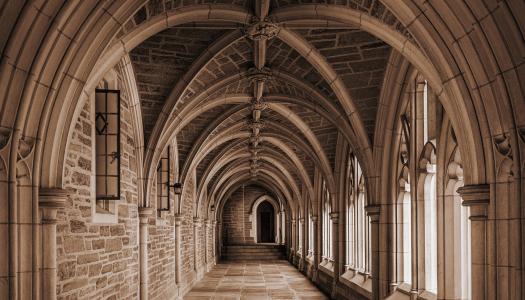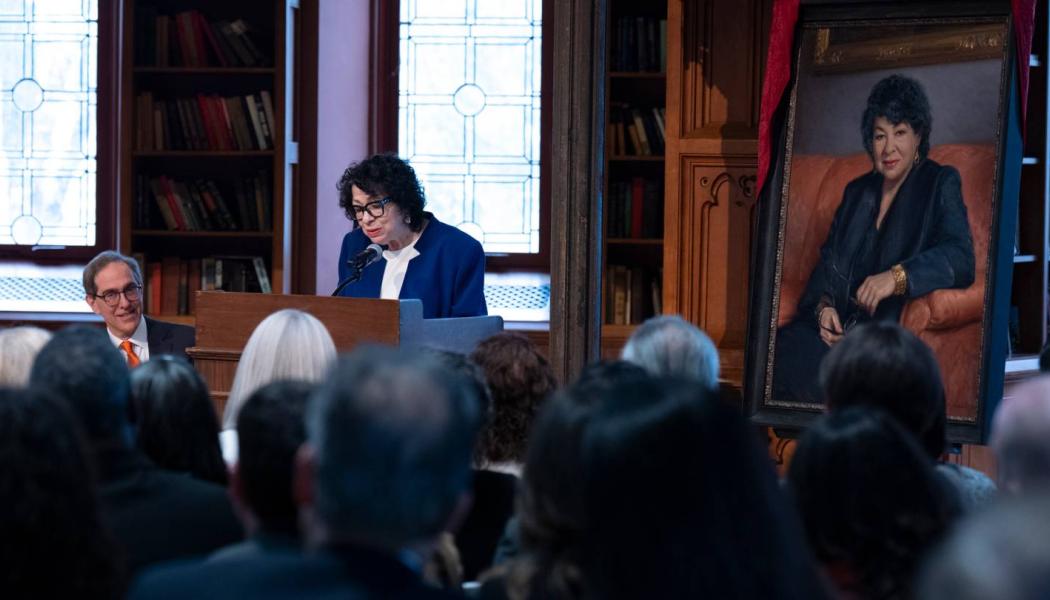
Princeton dedicated Sonia Sotomayor Hall in honor of U.S. Supreme Court Justice Sonia Sotomayor, Class of 1976, and unveiled a portrait of the Justice by Paul Newton that will join the University’s permanent art collection. Princeton President Christopher L. Eisgruber (left) listens as Justice Sotomayor addresses the audience at the April 11 ceremony. Photo by Denise Applewhite, Office of Communications
Princeton dedicates building, unveils portrait in honor of U.S. Supreme Court Justice Sotomayor ’76
Princeton University dedicated Sonia Sotomayor Hall in honor of U.S. Supreme Court Justice Sonia Sotomayor ’76 at a ceremony in Chancellor Green on April 11. The University also unveiled a portrait of Justice Sotomayor that will be added to Princeton’s campus art collection.
“I am deeply touched to have my name become a permanent part of Princeton,” Justice Sotomayor said. “Thank you, Princeton, for all I have become and for all the good your generations of students have brought into this world. My heart is bursting today with joy and gratitude.”
President Christopher L. Eisgruber ’83 called it “an exciting and historic day for Princeton.”
“With this portrait and naming, your remarkable legacy will be memorialized on this campus for generations to come,” Eisgruber told Justice Sotomayor before she cut the ceremonial ribbon for Sonia Sotomayor Hall. “We are forever grateful for the transformative contributions you have made to the nation and to humanity and for the inspiration you have been to so many of us.”
Earlier in the day, Justice Sotomayor joined Eisgruber for a wide-ranging conversation about her extraordinary life and career during a special program for students at Richardson Auditorium.
Justice Sotomayor has served as an associate justice of the Supreme Court of the United States since 2009. She is the first justice of Hispanic heritage and the third woman justice in Supreme Court history. She is also a former Princeton trustee.
Sonia Sotomayor Hall dedication, portrait unveiling
At the dedication and portrait unveiling, Justice Sotomayor expressed her immense gratitude to the Princeton professors, mentors, administrators, classmates and friends — many of whom were in the audience — who made her experience on campus so meaningful and who continue to shape her life today.
“My unexpected life journey started the day I was accepted to attend this University,” Justice Sotomayor said. “This is a place that helps make dreams come true, and this is the place from which the improbable happens.”
Sonia Sotomayor Hall, located at 36 University Place, is the site of programs that support first-generation college, lower-income, transfer and veteran students, as well as the first place that many prospective students visit on campus. It houses the Emma Bloomberg Center for Access and Opportunity, the undergraduate Admission Information Center and the Center for Career Development. The building also includes one of the two Princeton University Store locations.

“How incredibly fortunate we are that Justice Sonia Sotomayor’s name and image will be the welcome sign for every student who dreams of a Princeton education,” said Dean of Admission and Financial Aid Karen Richardson ’93. Richardson noted that Sonia Sotomayor Hall also houses programs integral to Princeton’s efforts to “provide an inclusive community for all who enter the front gates.”
Vice Provost for Institutional Equity and Diversity Michele Minter said there is “no Princetonian who better demonstrates” the University’s commitments to scholarship, service, community and excellence than Justice Sotomayor.
Emeritus Trustee C. Kim Goodwin ’81 called Justice Sotomayor an incredible testament to “what we can become and what we aspire to achieve.”
“We are all extremely excited and very invested in celebrating your exceptional achievements, contributions and exemplary core values that the University strives to encourage in future leaders,” Goodwin told Justice Sotomayor.
During his remarks, Eisgruber shared some of Justice Sotomayor’s own words about Princeton, noting how she became a leader on campus and an inspiration to others.
“Sonia Sotomayor arrived at Princeton in 1972 as a member of the Great Class of 1976. It wasn’t a long trip from her home in the Bronx, New York, but it was a world apart. She felt, as she described it, like ‘a visitor landing in an alien country,’” Eisgruber said. “Despite her initial feelings of trepidation, she persisted. She found community through her involvement in organizations such as Acción Puertorriqueña and the Third World Center, and she thrived in and outside of the classroom, charting her own path to success.”
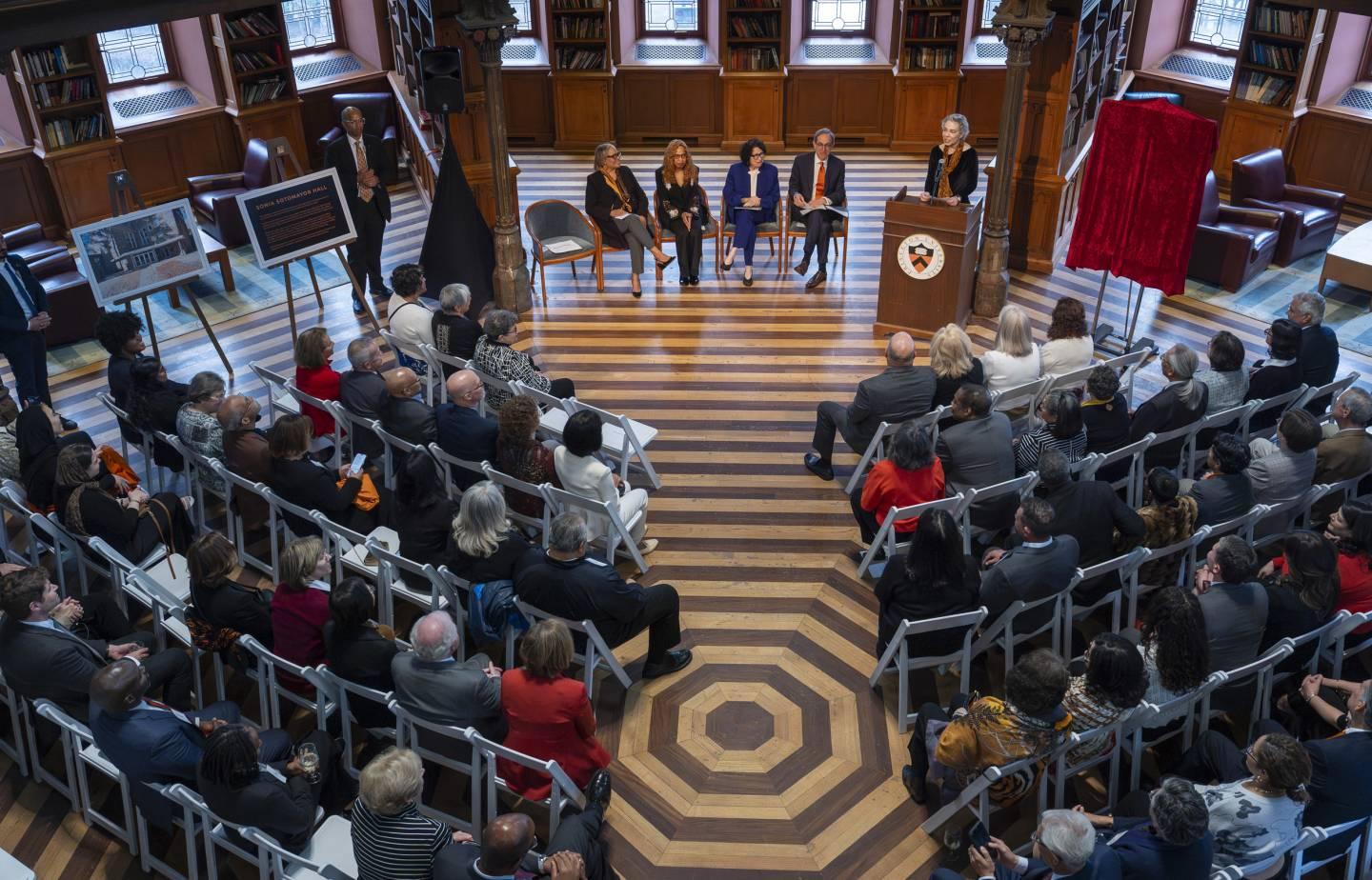
Justice Sotomayor graduated from Princeton with highest honors and received the Moses Taylor Pyne Honor Prize, the University’s highest undergraduate award. In her acceptance speech for the Pyne Prize, Eisgruber recalled, Justice Sotomayor “shared her hope that the day would mark ‘a new era in which Princeton’s traditions can be further enriched by being broadened to accommodate and harmonize with the beat of those of us who march to different drummers.’”
“Her words have proven prophetic,” Eisgruber said. “Today, as part of our ongoing commitment to make Princeton more inclusive for people from all backgrounds, this place that once felt so unfamiliar to Sonia Sotomayor will have a building named in her honor and walls adorned with her portrait.”
The naming of Sonia Sotomayor Hall and commissioning of Justice Sotomayor’s portrait are part of the ongoing work of the Council of the Princeton University Community (CPUC) Committee on Naming and the Campus Iconography Committee to broaden campus art and to recognize individuals who, over the past 75 years, “have been preeminent in a particular field, who have excelled in the nation’s service and the service of humanity, or have made a significant contribution to the culture of Princeton.”
“Justice Sotomayor’s inspiring story is a powerful reminder of the importance of diversity and inclusivity to the excellence of our campus community and the achievement of our educational mission,” Eisgruber said. “This portrait and naming will help to ensure that story is known and remembered, not just by those of us on campus today, but by generations of Princetonians for decades to come.”
Justice Sotomayor’s portrait, painted by the Australian artist Paul Newton, will hang in Chancellor Green outside the rotunda. Her painting is among 11 new portraits the University has commissioned since 2018.
Justice Sotomayor thanked Newton, who also attended the ceremony, for a painting that brings her “alive in such a moving way.” She noted that when she was a student in the 1970s — in the early years of undergraduate co-education — she did not see any buildings or portraits in honor of women. She said she hopes students today will see her portrait and Sonia Sotomayor Hall and “carry forward a new sense of all that is possible.”
Justice Sotomayor’s conversation with President Eisgruber
Before the dedication ceremony, Justice Sotomayor spoke to a packed house at Richardson Auditorium, answering questions from Eisgruber, including those submitted by undergraduates and graduate students.
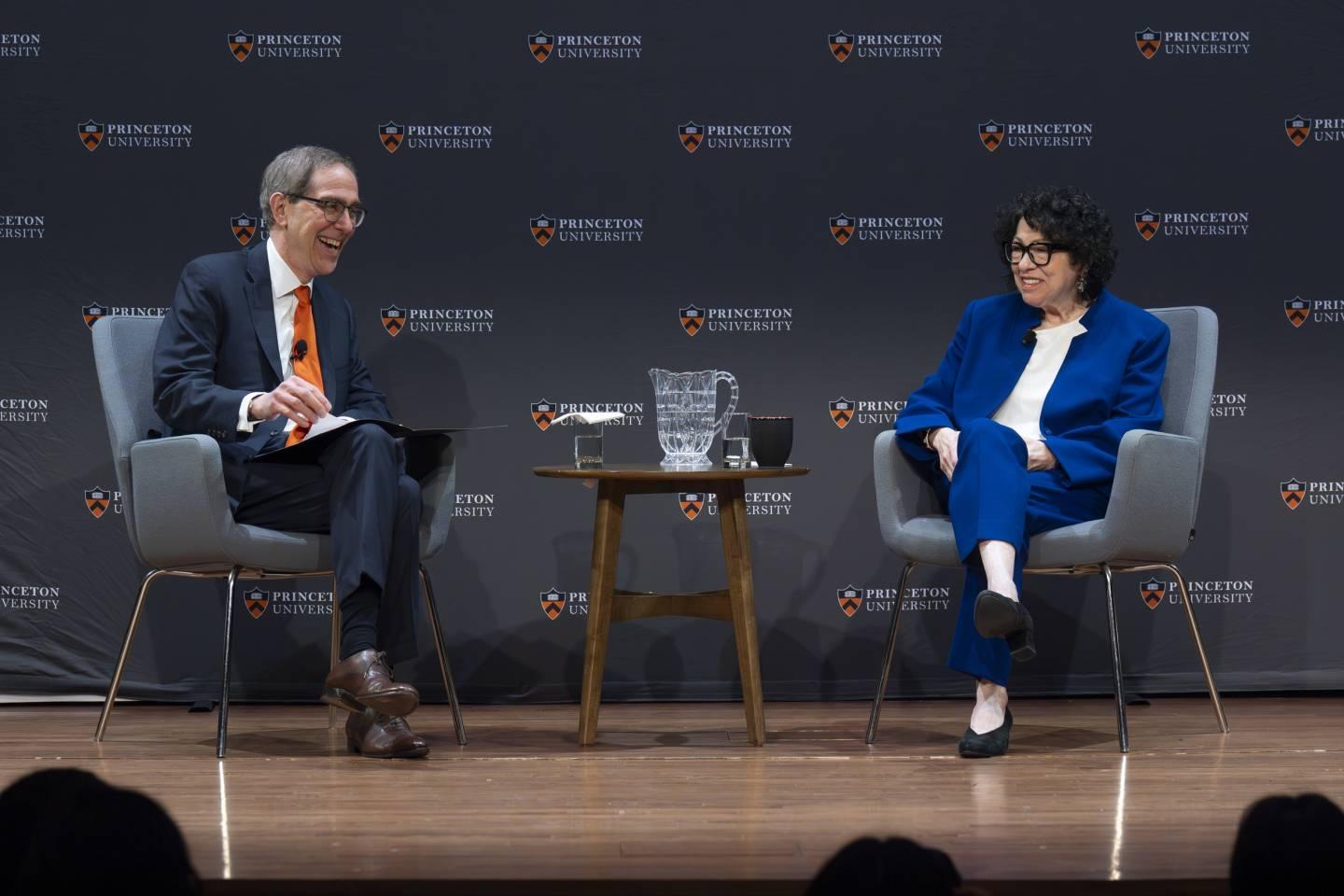
Class of 2025 member Laya Reddy and Class of 2027 member Jack Hasker asked Justice Sotomayor about the pivotal moments that defined her life.
“I guess the best decision I ever made in life was to come here,” Justice Sotomayor said, “meaning the mentors and the professors who helped me and the classmates who are still friends.”
Addressing all students in the audience, she added: “This place opens your doors forever and I have taken full advantage of that as I hope you will too.”
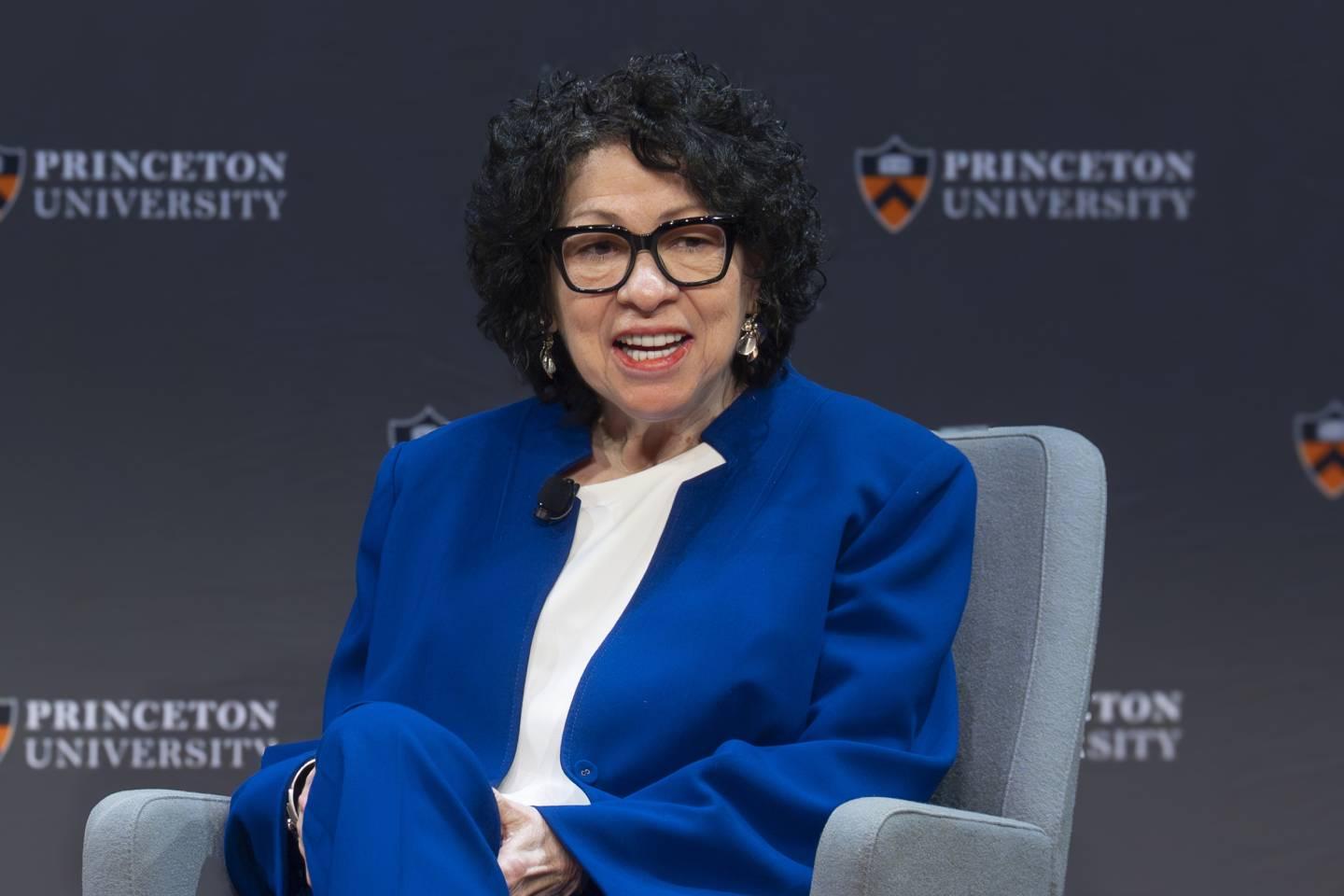
Class of 2025 member Diya Kraybill asked Justice Sotomayor for advice to students, particularly young women, interested in legal careers. “That’s what you need — curiosity — to be an effective lawyer,” Justice Sotomayor said.
Justice Sotomayor also answered questions from Eisgruber and students about how the Supreme Court operates, the rule of law and the role of citizens, legislators and jurists in Constitutional democracies.
She underscored that democracy requires active participation from all citizens. “Laws are made by people. People change laws. Voting changes law. It requires effort.”
Justice Sotomayor said she refrains from commenting about Supreme Court cases and related issues. “It doesn’t mean I don’t talk more generally, but I am very cautious about staying out of the political debate.”
She elaborated: “I do believe that when people are coming to the Court that they want to believe, and that they should believe, that I am keeping an open mind until I have read everything they have given me to read, until I’ve heard their lawyers argue and until I have heard all my colleagues’ thoughts.”
When young people ask her about court cases, Justice Sotomayor said she usually reframes the question, encouraging students to learn more about the law and perhaps about themselves. “I look at them and say ‘Why does my opinion matter? What’s your opinion and why?’”
Other honorifics, names and portraits
Justice Sotomayor has previously been honored by Princeton as a trailblazing undergraduate, loyal alumnus and University trustee and dedicated jurist.
At Alumni Day in 2014, upon receiving the Woodrow Wilson Award, Justice Sotomayor credited the University with instilling a commitment to service within her, and suggested broadening Princeton’s informal motto to include not just the nation’s service but “the service of humanity.”
The University updated its informal motto based on Justice Sotomayor’s words and dedicated a stone medallion inscribed with the new motto — “In the Nation’s Service and the Service of Humanity” — on the front lawn of Nassau Hall.
In 2019, a group of alumni established the Sonia Sotomayor 1976 Scholarship Fund in her honor to support students from first-generation backgrounds who have demonstrated a commitment to service.
In addition to Justice Sotomayor, the University has named several spaces since 2016 with advice from the CPUC naming committee that honor a range of individuals with connections to Princeton. Examples include Morrison Hall in honor of Nobel laureate and former Princeton faculty member Toni Morrison; Laura Wooten Hall in honor of Laura Wooten, the longtime election poll worker, Princeton resident and former Campus Dining staff member; and Ikeda Arch, in honor of Kentaro Ikeda, Class of 1944, the University’s sole Japanese student during World War II.
In addition to Newton’s painting of Justice Sotomayor, portraits commissioned as part of the History and Sense of Place initiative honor Morrison; Nobel laureate Sir W. Arthur Lewis; Bill Bradley ’65; Denny Chin ’75; José Ferrer ’33; Carl A. Fields, former assistant dean of the college; Elaine Fuchs *77; Robert J. Rivers ’53; former University trustee Ruth Simmons; and Alan M. Turing *38.


